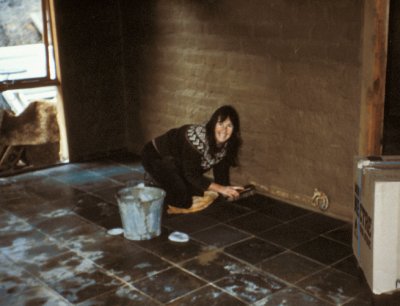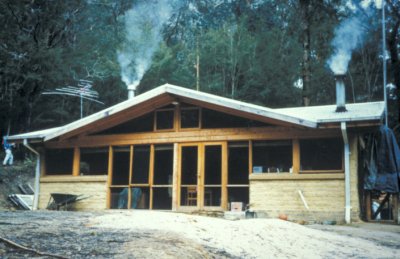Cover page Preface Introduction Context Feminism Feminist Research Housing and Feminism Self Build Housing Method Sample Process Analysis Case Studies Marion Pam May Carol Jan K Tashe Findings Personal Background Community Training and Technical Land Policies Institutional Support Shelter and Service Planning and Design Building Materials Conclusions Summary Recommendations Research
|
Marion Home ownership was Marion's preferred tenure option. "I thought that if I put a lot of the labour in it would be cheaper to build than to buy an established home." Home purchase was an option for Marion, and she had her name down for other schemes, however "...the self build scheme was offered first."
In this program self builders contribute their labour in lieu of cash and then own a share of the house. This share is usually refered to a percentage equity arrived at by comparing the market value of the house and the value of the mortgage. As the market value had not been established, it is not possible to say what % equity Marion holds in her home. Marion said "It all took longer than I'd imagined!" A very wet winter caused an eight month hold-up at the start of the project. It was not possible to get bulldozers or concrete trucks on to the site until it had dried out sufficiently. The longest part of the process was manufacturing and laying the mud-bricks, Marion said she had some "pretty wild mud brick working bees" with her friends. Laying the bricks proved a challenging task, the job became "progressively harder the higher the walls got". Marion said there were other delays due to weather and also her frame of mind. The solitary nature of the work was tough on Marion's emotional wellbeing. "Some days it was really hard to get motivated -mudbricking was wet and muddy and sometimes a cold job."
Marion outlined this brief time line.
1986 Marion said that she and her two children moved into "the not totally finished house" in the winter of 1991, "it was a lot better than the on site caravan". She continues to live in the house she built, but she worries that as the bedrooms are very small and there are only two there will not be enough room when her two children get older.
Marion concluded positively: "anything is possible, step by step, the project unfolds, sometimes overwhelming, mostly buffered by family and friends. The house is part of me and is changing to reflect my needs. It sits comfortably on our beautiful bush block and is visited by native wildlife. It is simply beautiful, a wonderful achievement and wonderful part of my life."
|


